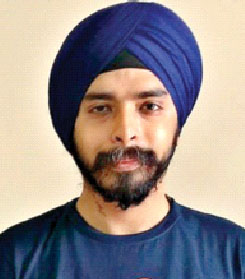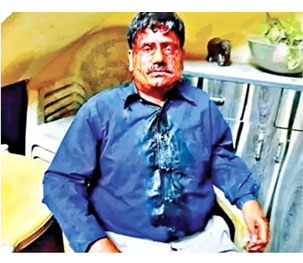Information is deemed to be the force-multiplier of any organisation, be it Government or private. It helps in decision making, creating perceptions, marketing products, human resource management and almost all other aspects of life and Governance
Punjab has always remained at the forefront of the information, journalism and media domains. Our sages and Gurus from time immemorial were accomplished poets and literary personalities who have given, as a legacy, lucid literature that holds the region’s cultural fabric even today. The concept of journalism through the medium of newspapers came to Punjab quite early compared with the rest of the country. In the mid-nineteenth century, the region witnessed a proliferation of Punjabi, Urdu and English newspapers, and the tradition continues.
English journalism entered Punjab in 1846 with Lahore Chronicle. Akal Parkash, first published in 1876 and ‘Akhbaar Sri Darbar Sahib, Sri Amritsar Ji’ are among the first newspapers in Punjabi written in Gurmukhi script. Punjabi Darpan, in 1885, became the first newspaper to print a photograph (that of Maharaja Duleep Singh). Saheed, published in 1914 from Amritsar, was the first daily in the Punjabi language.
A milestone in journalism was achieved in February 1881 when Sardar Dyal Singh Majithia started The Tribune as a weekly from Lahore. It progressed over the years to become first a bi-weekly, then a tri-weekly and finally a daily newspaper. Today it has Hindi and Punjabi editions along with English. It moved to its present office premises in Chandigarh in 1969. A famous Punjabi journalist, Professor Gulzar Singh Sandhu, was the founding editor of The Punjabi Tribune; he also taught journalism at Punjabi University.
The Sikh community also attempted to bring out its own newspapers. Punjabi Patriot, run by the Sikhs, came out in 1891. The Khalsa, edited by Bhagat Laxman Singh, was brought out in 1899. These newspapers, however, could not sustain themselves.
By the beginning of the 20th century, Punjabi newspapers had become a viable instrument in the freedom movement, which was the reason behind the highly charged spirit of nationalism generated in Punjab. Thus, the early twentieth century emerged as the most vibrant period for journalism in Punjab, with newspapers coming up at a very fast rate. Some survived, while others have been replaced.
Punjab Kesari was established by Lala Jagat Narain; later, his elder son Romesh Chander took over the reins. Both were assassinated in 1981 and 1984, respectively, at the time when terrorism was at its peak in Punjab. The newspaper courageously continued to raise a voice against terrorism and also established a Shaheed Parivar (Martyr Families) Fund to provide assistance to families affected by terrorism in Punjab. It is today the largest circulated Hindi daily in India. Punjabis made a tremendous contribution to the field of journalism in the nineteenth and twentieth century. The famous freedom fighter, Lala Lajpat Rai, was editor of Arya Gazette, he also contributed to many newspapers in English, Hindi, Punjabi and Urdu and authored many books. Saheed Bhagat Singh wrote for many journals under the pseudonym – Balwant Singh. His reverberating works are Vishv Prem, Yuvak and Holi Ke Din Rakt Ke Chinte.
Kalinath Rai is remembered as an outstanding editor of The Tribune. Another prominent lawyer/ journalist/ politician was Malik Barkat Ali, who edited a famous English daily, The Observer, from 1914 – to 1918. Sita Ram Goel, a communist, turned nationalist and political activist, was known for his outspoken writings against expansionist Islam and missionary activities of Christianity. Goel regularly wrote for the ‘Organiser weekly’. In modern times, the names of Khushwant Singh, Arun Shourie, Kuldip Nayyar, Giani Gurdit Singh, Roopinder Singh, Amrita Chaudhry and many more resonate in the field of journalism.
Punjab has a robust social media presence, with a large number of videos on incidents and views being uploaded on all social media platforms on a daily basis. There is not much to speak of in the wave media; the few radio channels available cater mostly for foreign audiences.There are about 62 Journalism colleges and institutions in Punjab where students from within and outside the state are being taught. Many students, especially the top lot, tend to seek placement out of the state and mostly abroad. Journalism, however, is not one of the many sought after professions in Punjab.
Late-Night Swoop on Free Speech
On even days they are champions of free speech and on odd days they turn into tormentors of those who exercise their right to speech. In a late-night swoop, on May 6, Punjab Police made an aborted bid to ‘abduct’ BJP leader Tajinder Bagga from his Delhi home without due process. His crime: Levelling criticism against Delhi Chief Minister Arvind Kejriwal. On May 7 late night, the Punjab and Haryana High Court granted protection to BJP Delhi spokesperson Tajinder Bagga from arrest in connection to the case registered against him by the Punjab Police.

Tajinder Bagga informed the court that the case against him was the result of a political vendetta. His counsel stated that the custody of the BJP leader was not required for investigation, given that the evidence (which formed the basis of the case) was electronic in nature. Bagga added that he has deep roots in the society and was not a ‘flight risk.’ Earlier, Punjab Police had registered an FIR against Tajinder Bagga for his criticism of Arvind Kejriwal after the Delhi CM mocked ‘The Kashmir Files’ movie during the budget session of the Delhi assembly calling it a jhoothi film. The film depicts the sufferings of the Kashmiri Hindus during the genocide they suffered in Kashmir in the late 1980s and early 1990s. Tajinder Bagga said, “Those who believe they can do anything with the help of Police, I want to tell them a BJP worker will not be scared of anyone.” He thanked the Haryana and Delhi police for supporting him and informed that a case has been registered against the Punjab police.
“This was an illegal detention. No local police officer was informed about this. Delhi CM Arvind Kejriwal can register 100 more FIRs against me if he wants to. We will keep fighting until he apologises for what he said about Kashmiri Pandits,” he added.
Bagga’s father PS Bagga said, “Police officials started dragging, they didn’t allow him to wear his turban, this is against our religious principles. We’ve asked Punjabi brothers to raise their voices against this. Finally, Tajinder is back, this is the victory of truth.”
Punjab remains in the forefront of the information era, with interest in news and views being paramount. Media in Punjab has been successful in maintaining its vibrancy despite challenging circumstances. Information continues to influence perceptions but against a discerning backdrop. The responsibility of media increases manifolds in a sensitive region like Punjab that, being a border state, remains under the shadow of an inimical neighbour. While functioning under the ambit of freedom of expression, it is important for the people using social media as well as media houses to remain conscious of their responsibility to generate good, positive content that leads to the proliferation of development, prosperity and social integration in this sensitive state. Most importantly, media must address the many social issues like drugs, migration, conversion, soil erosion etc.













Comments